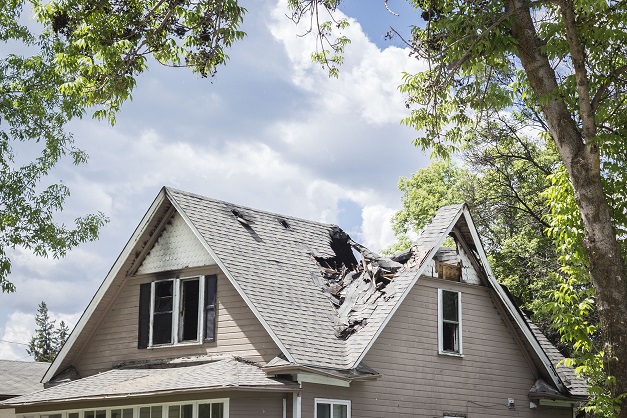Your roof is your home’s first line of defence against the elements, shielding you and your belongings from rain, wind, and harsh sunlight. Over time, your roof can face wear and tear that may lead to damage. Recognizing the signs of roof damage and knowing when to call a professional for repairs is essential to ensure the longevity and integrity of your home’s protective covering.
Learn more about the various signs of roof damage and provide guidance on when it’s time to seek expert assistance for roof repair.
1. Missing or Damaged Shingles
Keep an eye out for missing or damaged shingles on your roof. Shingles can become dislodged due to strong winds, falling debris, or simple wear and tear. When you notice shingles that are curled, cracked, torn, or entirely absent, it’s a clear indicator that your roof’s protective layer has been compromised. Damaged shingles can lead to leaks and further deterioration if not addressed promptly.
2. Water Stains on Ceilings or Walls
Water stains on the ceilings or walls inside your home are a telltale sign of a roof leak. Leaks can be caused by various issues, including damaged flashing, cracked shingles, or improperly sealed roof penetrations. If you notice brownish or discoloured patches on your ceilings or walls, it’s crucial to address the source of the leak promptly to prevent further water damage.
3. Sagging Roofline
A sagging roofline is a serious sign of structural damage that requires immediate attention. It can be caused by rotting roof decking, compromised trusses, or inadequate support. A sagging roof not only affects the aesthetics of your home but also poses a safety risk. If you notice any drooping or sagging areas on your roof, contact a professional roofing contractor without delay.
4. Granule Loss and Algae Growth
Asphalt shingles are covered in granules that protect them from the sun’s ultraviolet rays and provide fire resistance. If you observe excessive granule loss, often visible in your gutters or downspouts, your shingles are becoming less effective at protecting your roof. Additionally, if you notice dark streaks or patches of green algae on your roof, it’s an indication that moisture is accumulating and potentially causing damage. These signs point to a compromised roof that requires professional attention.
5. Damaged Flashing
Flashing is the material used to seal gaps and joints in your roof, such as around chimneys, vents, and skylights. Damaged or deteriorated flashing can lead to leaks and water infiltration. If you notice gaps, rust, or loose flashing around these critical areas, it’s advisable to have a roofing professional assess and repair the flashing to prevent further damage.
6. Visible Moss or Mold Growth
Moss and mould growth on your roof are indicators of excessive moisture retention. While moss may appear harmless, it can trap moisture against the shingles, leading to rot and deterioration. Mould growth not only damages the roof but can also pose health risks to your family. If you see signs of moss or mould on your roof, it’s time to consult a professional to evaluate the extent of the damage.
7. Excessive Energy Bills
A damaged roof can affect the insulation and ventilation of your home, causing your heating and cooling systems to work harder. If you notice a significant increase in your energy bills without a corresponding change in usage, your roof might be playing a role. A professional roofing inspection can identify any issues that are compromising your home’s energy efficiency.
8. Age of the Roof
Roofs have a limited lifespan, and the age of your roof can itself be a sign of potential damage. Asphalt shingle roofs typically last around 20-25 years, while other materials might have longer lifespans. If your roof is approaching or surpassing its expected lifespan, it’s advisable to have it inspected by a professional, even if you don’t see visible damage yet.
Conclusion
Your roof is a critical component of your home’s structure and overall protection. Recognizing the signs of roof damage and understanding when to call a professional for a professional roof repair can save you from costly repairs and extensive damage down the road. Regular inspections addressing damaged shingles, water stains, sagging, granule loss, damaged flashing, moss or mould growth, and energy inefficiency are key to maintaining a healthy roof. Remember that a proactive approach to roof maintenance can extend the life of your roof and provide you with the peace of mind you need to weather any storm.

Recent Comments